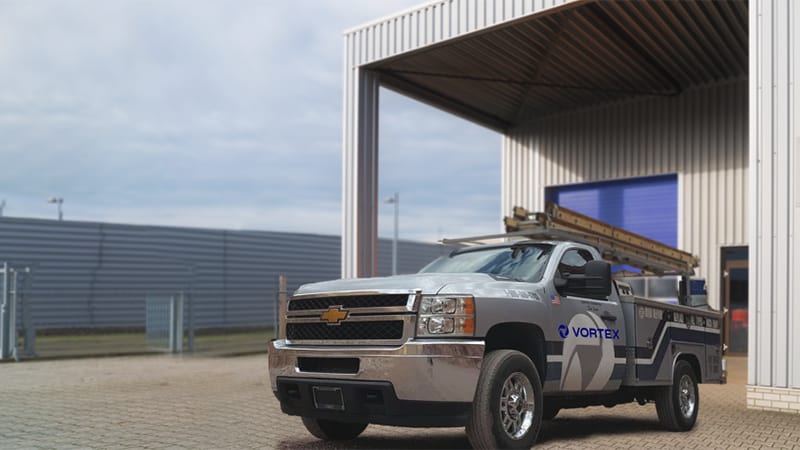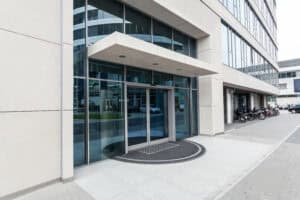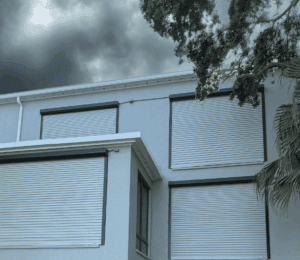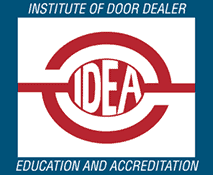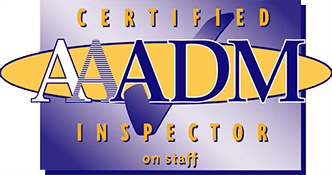ADA Requirements for Doors: What You Need to Know
 All businesses that serve the public are required to comply with the Americans with Disabilities Act (ADA), which states that every commercial and government building must make reasonable accommodations for handicapped individuals. Penalties are strict and apply to everyone from giant corporations to your local shops. Because navigating doorways can be a significant challenge for people with wheelchairs and mobility aids, entrances are a major focus of ADA legislation. To help avoid legal problems, we’ve laid out the ADA requirements for doors ‒ so you know the standard officials expect your building to meet.
All businesses that serve the public are required to comply with the Americans with Disabilities Act (ADA), which states that every commercial and government building must make reasonable accommodations for handicapped individuals. Penalties are strict and apply to everyone from giant corporations to your local shops. Because navigating doorways can be a significant challenge for people with wheelchairs and mobility aids, entrances are a major focus of ADA legislation. To help avoid legal problems, we’ve laid out the ADA requirements for doors ‒ so you know the standard officials expect your building to meet.
What is ADA Accessibility?
President George H.W. Bush signed the ADA into law on July 26, 1990. It was the first civil rights law that prohibited discrimination against disabled people. It was also designed to ensure that people with disabilities had equal access to and use of physical spaces required to fully participate in society, regardless of physical ability. Inspired, several states enacted similar laws, often with stricter provisions. Commercial spaces were particularly affected by the new regulations, since they play such a prominent role in work and recreation.
Failure to comply with the ADA has serious consequences. Companies can be charged up to $75,000 for their first violation and up to $150,000 for each subsequent violation. Their reputation can suffer as well. Customers may choose to take their business elsewhere, while candidates may stop applying for open positions. Fortunately, complying with ADA guidelines is simple and straightforward, especially with the right team advising you.
ADA Requirements for Doors
People pass through doors so often, they rarely think about why they’re able to do it so easily. Doors may not seem like complex devices, but there are several elements that need to be considered in order for government and commercial buildings to remain accessible to all staff, visitors, and tenants.
ADA Doors and Compliance Standards
ADA guidelines vary depending on your location. As mentioned above, some states impose more rigorous requirements, while others implement or interpret federal laws differently from their neighbors. Nonetheless, there are a few core elements every business must adhere to.
- Door Width. The opening must be at least 32 inches wide when the door is open 90 degrees.
- Maneuvering Clearance. There must be at least 18 inches of clear space between the latch and the nearest obstruction, as well as another 60 inches (five feet) of space in front of the door.
- Level Landings. Floors on both sides of the door must be flat and stable.
- Threshold Height. If the door has a threshold, it cannot be higher than 1/4 inches or 1/2 inches if beveled (sloped).
- Door Latch. Users need to be able to operate the handle with one hand, without tight grasping, pinching or twisting.
- Latch Height. The latch needs to be 38-48 inches (three to four feet) above the floor.
- Opening Force. If the door is located inside a building, the user shouldn’t need to apply more than five pounds of force to swing it open. For external doors, the maximum allowable force is ten pounds.
- Closing Speed. When the door closes, it should swing shut on its own ‒ taking no less than five seconds to go from 90 to 12 degrees.
- Smooth Surface. On the push side, the bottom ten inches of the door must have a smooth, uninterrupted surface.
- Vestibules. If the user has to pass through a series of doors (vestibules), there must be 48 inches of clear space between them, plus the width of the door. Therefore, if the doors are 36 inches wide, you need 84 inches of space between them (48+36 = 84).
Which Entrances Need To Be ADA Compliant?
While existing buildings only need to have one accessible entrance, in new buildings, no less than 60 percent of your doorways must be ADA compliant. In large buildings with multiple tenants, such as a shopping center, every tenant space must have at least one accessible entrance.
Main entrances must be ADA compliant. If you have an alternate entrance, it must be open the same hours as the main one and people must be able to use it on their own, without any special assistance. If your building is connected to a parking structure, pedestrian tunnel, or elevated walkway, those entrances must be accessible as well.
All accessible entrances must be marked by the International Symbol of Accessibility, the blue and white icon featuring a wheelchair user. Inaccessible entrances must have signs indicating they cannot accommodate people with wheelchairs or mobility aids, as well as additional signage directing them to an accessible entrance.
How Vortex Can Help You Meet & Exceed ADA Compliance
Thanks to their extensive training, Vortex technicians are well-versed in ADA guidelines. Besides maintaining and repairing your doors, we can also verify whether your doors meet minimum accessibility requirements. If they’re not compliant, our service teams can upgrade them with parts made to manufacturer’s standards.
Vortex technicians are certified by the American Association of Automatic Door Manufacturers, enabling us to retrofit doors with ADA compliant hardware, including automatic openers, allowing everyone to enter and exit your building without difficulty. We can also inspect and repair your existing equipment, in order to maximize accessibility and minimize potential liabilities. Contact us today to learn more!
FAQs
Are there penalties for not being ADA compliant?
Yes, the Department of Justice can impose fines of up to $75,000 if they discover your entrance does not comply with ADA guidelines. Failure to address the problem could result in additional fines of up to $150,000. State and local agencies may also impose additional penalties.
Can I make my existing doors ADA compliant, or do I need new ones?
If your doors are not ADA compliant, Vortex can retrofit them by adding hardware and signage to bring them into line with the latest ADA requirements.
How often should I have my doors inspected?
Commercial doors should be inspected at least once a year to prevent breakdowns and costly repairs. However, doors in high traffic locations may benefit from more frequent inspections.
Does ADA compliance change depending on what state I am in?
Yes, ADA laws differ by state. Several state and local governments have passed their own regulations, different from federal guidelines. This legislation normally requires businesses to take additional measures in order to ensure everyone can access commercial spaces independently and imposes additional penalties on companies that don’t comply.

